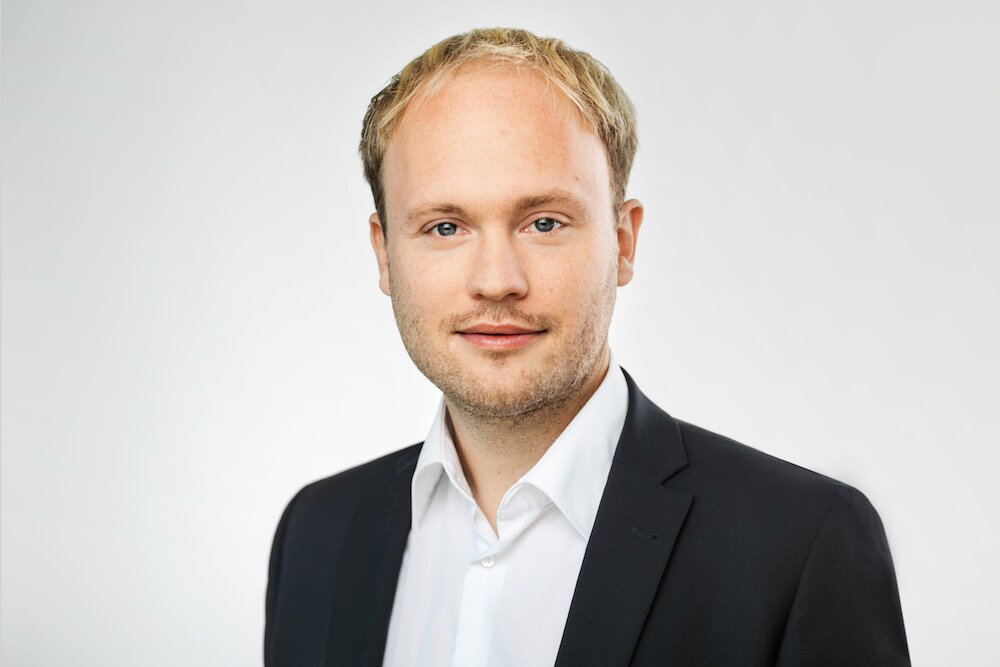How one company is tackling Europe’s credit crunch
In 2014, physicist Oliver Schimek set out to develop a cross-border, peer-to-peer lending platform for private investors to access consumer loans. At least, that was the plan.
He recognized a harmful trend developing in the post-crisis climate: increased regulatory restrictions that limited the lending capacity of banks.
“Regulators created more incentives for banks to shrink their balance sheets in an attempt to make them safer, but banks with smaller balance sheets can lend less money,” explained Schimek, Cofounder and Co-CEO of CrossLend. “Our initial reasoning was that we needed an alternative to this suboptimal system, which we thought would be our lending platform.”
Add rising equity requirements to the mix and some banks find themselves with no choice but to reject perfectly acceptable clients due to balance sheet restrictions. In this scenario, borrowers would then turn to peer-to-peer lending for help.
The idea — Europe’s first and only cross-border lending platform — proved solid, gaining traction and investor support.
What if, though, they could solve the root of the problem rather than alleviate a symptom? What if those customers were never rejected in the first place? With questions like these, the CrossLend of today began taking shape.
“We changed our idea 180 degrees. By introducing the peer-to-peer model directly to the back offices of banks, we give them a flexible instrument for refinancing their lending operations. Our concept lets them keep the customer relationship, monetize it and service the loan without the full balance sheet implications.”, Schimek said.
At the core of their approach is a new way of securitizing loans. Instead of issuing a bond against pools of loans, CrossLend securitizes single loans with single bonds, translating the loan receivable into tradable securities.
“We dropped an up-and-running business with high potential to reach for something with even more potential”
Like most pivots, the move from its original b2c model to this grander vision was painful. “We dropped an up-and-running business with high potential to reach for something with even more potential, but that is way more complex. It was a tough decision, but also the best,” he added.
CrossLend’s relevance reflects the times; the weaknesses of Europe’s economic environment lie exposed and under pressure. Perhaps it is no surprise that the arrival of an answer to low interest rates and increased regulations is garnering attention.
Everyone wins: borrowers get loans, investors gain access to a new asset class, banks lighten balance sheets and retain clients, politicians drive SME financing, and regulators see the derisking of banks.
“Europe is in trouble, so we need to stabilize its backbone, which is the financial system, whether we like it or not,” Schimek noted.
Banks already have the data, experience and credit models that an entirely separate peer-to-peer market would lack. Instead of building an alternative lending space with no track record that claims no risk, CrossLend makes banks themselves peer-to-peer capable.
“Luxembourg has the potential to be the hub for the European debt exchange.”
This mission aligns with the European Commission’s Capital Markets Union (CMU) plan to integrate EU capital markets by 2019, linking savings and growth to improve conditions for savers and investors.
“Their action plan says we need to connect institutional and retail capital to the lending side of the economy preferably via securitization. Compare that to our business plan and it’s basically a one-to-one match,” Schimek said.
Validation for this b2b shift arrived in late 2016. First, the CME Group — the world’s largest derivate marketplace, handling an average $1 quadrillion in contracts annually — chose CrossLend as the recipient of its first investment outside of the US, spurred by the exciting prospect of a European debt exchange.
A second vote of confidence came from the highly competitive Luxembourg Future Fund, which only invests in venture capital funds and innovative tech SMEs that meet strict criteria regarding positive spillover implications for the economy.
“Luxembourg has the potential to be the hub for the European debt exchange. Becoming the center of the lending economy would draw so much attention and lead to an entire new ecosystem,” he added.
The Grand Duchy’s securitization structure makes CrossLend’s model possible. Armed with a license from the CSSF — the local regulatory body — and the European passport, its Luxembourg-based subsidiary can offer its solution across borders to directly alleviate the EU’s credit strain.
“We’re not selling shoes via an online shop. We are engaging with highly regulated entities and regulators”
According to Schimek, the CSSF proved to be a unique bonus: “They are open-minded and weren’t frightened by us being a small, new fintech at the time. They are interested in understanding your business model, always considering how it relates to Luxembourg’s mission. This is what you would hope for from a 21st-century regulator.”
Looking back on the past few years, he admits that the biggest challenge was managing all of the complexities inherent to the business: “We’re not selling shoes via an online shop. We are engaging with highly regulated entities and regulators, developing new solutions for an economy that is not particularly fast when it comes to change and technology.”
With a new office opening in Luxembourg this year, the CrossLend team continues growing as it works to revolutionize Europe’s lending market by helping banks, not competing with them.

